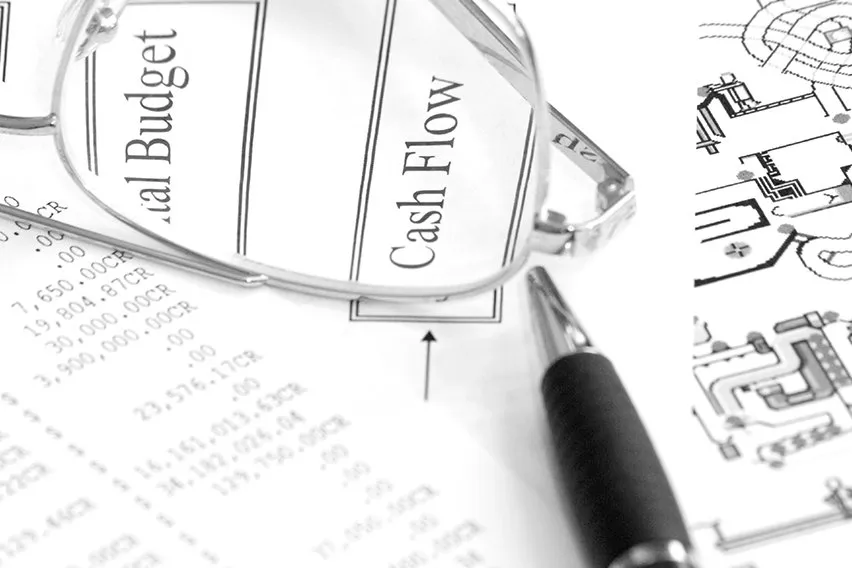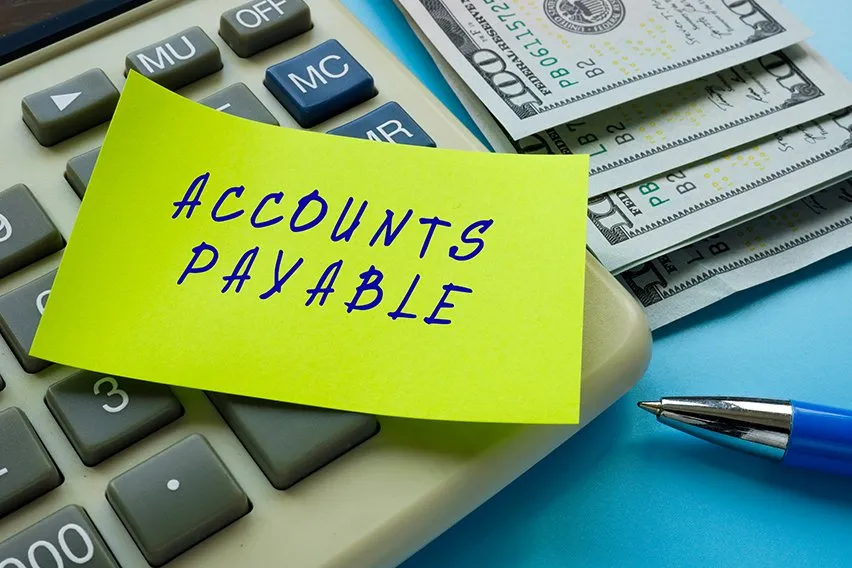Cash Flow Statement Indirect Method: What It Is & How to Prepare?

The flow of funds in and out of business is integral to business operations. Of all of the financial statements available, the statement of cash flows can be the most useful. It tells you exactly what your business is spending money on, and what you’re making money from. There are two ways of looking at cash flow, though. These methods are the indirect method and the direct method. Do you know which one your business is using?
Today, we’re going over the indirect cash flow statement and method. We’ll also go over how to prepare this document. Keep reading to find out more about this method of accounting!
Here’s What We’ll Cover:
What Is a Cash Flow Statement?
What is the Indirect Method Cash Flow Statement?
What Are the Advantages of an Indirect Cash Flow Statement?
When Should Each Method Be Used?
How Should Cash Flow Statements Be Prepared?
What Is a Cash Flow Statement?
To get started, let’s refresh on what a cash flow statement is. The cash flow statement is one of three major financial statements a business produces. When looking at a cash flow statement, you’re reviewing the cash from operations. This includes cash flows from operations that are generating revenue and cash flow from operations that are expenses.
Cash flow statements are very valuable to investors. Investors can determine a company’s profitability from the cash flow statement. It’s the document that they rely on most when making their investment decisions. Investment activities can help any business a great deal, so having accurate cash flow records is a must.

What is Included in a Cash Flow Statement?
Cash flow statements include information from three major categories. These areas of cash flow are broken down by analysts for financial analysis. Being able to identify where money is being generated or spent can provide clarity of analysis.
- Cash flow from operating activities: Also called operating cash flow. This is the money made from operating activities. It records the company’s operating cash movement.
- Cash flow from investing activities: Money made from any investments. This can include the sale of assets, the sale of equipment, or long-term assets (investments).
- Cash flow from financing activities: The cash level from stocks. This can include the purchase of company stock, issuing bonds, or payments of interest/dividends.
Sometimes there is a fourth category that provides an area to record other cash flows. This is the supplemental category. However, it is very rarely used.
What is the Indirect Method Cash Flow Statement?
The indirect method of cash flow is one of two cash flow methods used in accounting. It is used to generate a cash flow statement. The indirect method, as the name implies, looks at cash flow indirectly. This means that it uses increases and decreases in balance sheet accounts. Using the balance sheet changes, the indirect method modifies the operating section of the cash flow statement. It makes the change from the accrual accounting method to the cash method of accounting.
The indirect method starts with net income or loss. It then modifies this with additions or deductions from non-cash revenue and expense items. This results in the cash flow from operating activities.
Breaking it Down
When you do your accounting using the accrual method, revenue is recognized when earned. The caveat to this is that the cash may not be received at that time. If a customer makes a purchase on credit, then the revenue is recorded at the time of purchase. However, because the purchase was made on credit, no money has changed hands yet. The revenue is recognized in the month of the sale, regardless of whether or not it is paid for in that month.
The indirect method seeks to determine actual cash flow. To do this, it reverts the accounting method from accrual to cash accounting. This allows cash inflows and outflows to be depicted with accuracy for the period. For example, a customer used $100 in credit for a purchase. In your books, the $100 is listed as a debit under accounts receivable. In revenue, a credit is added for the same $100 since no money has been received. The debit increases accounts receivable. This is shown on the balance sheet.
Using the indirect method, net income is presented on the first line of the cash flows statement. All following lines show increases and decreases. This is dependent upon the assets and the liabilities of the company. These figures are then added or subtracted from net income accordingly, based on their cash impact. In the example, the $100 has not yet been received by the business. That means that net income was overstated by that amount. Therefore, using the indirect method, the $100 is deducted from net income. It would show up as “Increase in Accounts Receivable (100).”
What Are the Advantages of an Indirect Cash Flow Statement?
Overall, using the indirect method is easier than using the direct method. The indirect method doesn’t require all of the documentation and preparation that the direct method does. It also takes less time. For this reason, it’s preferred by many when reviewing cash statements internally.
Also, a cash flow statement prepared using the indirect method can be made from the two other major financial statements. Using the balance sheet and income statement, accountants can prepare a cash flow statement. Most businesses use accrual basis accounting, so figures are consistent with the indirect method.
However, it isn’t the preferred method when it comes to the standards of accounting. Because it lacks the detail that the direct method requires, it is often viewed as being less transparent. International standards for business accounting prefer the direct method overall.
What is the Direct Method?
The direct cash flow method requires all of a business’s gross cash payments and gross cash receipts. This makes it a more straightforward method, and lends itself to more transparency. All figures are considered to be reliable using this method. It’s also the preferred method of cash flow statement review. Shareholders and investors like having more data than not enough. The direct method gives them everything.
The problem with the direct method lies in the time it takes. Because of the need to analyze all payments and receipts, the direct method can take much longer. This is partially dependent upon your business. Retail businesses that see many transactions in a day may take more time than other forms of business. This makes the direct method labour-intensive, and costly.
Additionally, transparency can become a problem. Companies that use the direct method to prepare statements are publishing financial details. These can be used against the company.
When Should Each Method Be Used?
Because there are two methods, you may be wondering when each one should be used. We’re going to cover the best situations for both the indirect and direct preparation methods.
When to Use the Indirect Method
The indirect method can be used in a variety of ways. However, it is most useful when you’re trying to determine the ebbs and flows of your business’s cash flow. Most businesses prefer to use this method, since it shows cash flow in a more realistic sense. Plus, it’s easier to use. If you’re doing an internal audit of your cash flows, be sure to use the indirect method. It’s the fastest option for most businesses, and it’s the method that accountants prefer.
Larger businesses tend to be better suited for the indirect method. The financial health of a large corporation cannot be accurately assessed using the direct cash flow method. This is because a large business has many variable sources of income, as well as expenses. Using the direct method does not take into account outstanding accounts. This means it doesn’t review accounts receivable or accounts payable.

When to Use the Direct Method
Most small businesses find the direct method to be useful. Many small businesses don’t have a great deal of fixed assets. The direct method only uses actual cash income and expenses. Using these two pieces of information, total income and losses can be calculated.
Keeping in mind the size of a small business, the direct method better fits the workflow. Income sources and expenses tend to be less diverse for small businesses. Non-cash assets tend to be less utilized in small businesses, as well. As such, the direct method is a better financial picture of a small business.
How Should Cash Flow Statements Be Prepared?
Cash flow statements, just like all financial statements, can be prepared manually. However, the easiest way to generate a cash flow statement is by using accounting software. Most accounting software options will help you generate cash flow statements using either method. Also, most software options compile and organize all data regarding your finances. This means that all journal entries for revenue and expenses are in one place for you. This makes preparing financial statements much easier, overall.
If you’re looking for new accounting software, be sure to check out FreshBooks. FreshBooks helps you handle all of your accounting needs. Be sure to give it a try, at no cost to you. A free trial is available to all new users!
Key Takeaways
The indirect method of preparing a cash flow statement is a useful skill to have. Being able to quickly determine cash flow from your other financial statements can help you stay on top of your business. Both the direct method and the indirect method have their place, and both should be in your toolbox! If you’re looking for more information like this, be sure to visit our resource hub. There you’ll find all of the financial articles you’re looking for! Check it out today.
RELATED ARTICLES

 Hedge Accounting: Definition & Guide
Hedge Accounting: Definition & Guide Accounts Receivable Management: 6 Best Improving Tips
Accounts Receivable Management: 6 Best Improving Tips What Is Return on Equity (ROE)? Definition & Calculation Guide
What Is Return on Equity (ROE)? Definition & Calculation Guide What Is Accounts Payable Automation & 3 AP Automation Software
What Is Accounts Payable Automation & 3 AP Automation Software Discount Rate Formula Definition & How to Calculate It
Discount Rate Formula Definition & How to Calculate It Bookkeeping Basics: A Small Business Guide
Bookkeeping Basics: A Small Business Guide